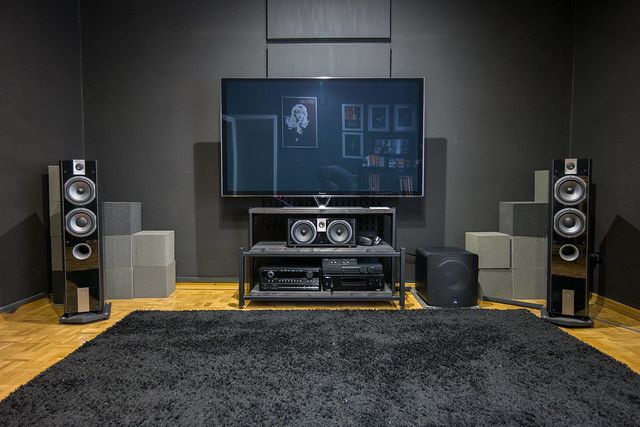A home cinema is a luxury many of us dream of, but achieving that dream is easier than you might think. As long as you can find the space, a new home cinema could set you back as little as $1,500 to $2,000 – though luxury options can head into the higher ends of the spectrum.
Choose the room
Will it be a dedicated space or multi-purpose? The home cinema is perfect for that dark, windowless room that you’re not sure how to use.
Do
Use a room like a basement or a converted garage, which are ideal for this.
Choose a room that’s big enough and preferably rectangular, to allow for the number of viewers you want to seat
Don’t
Cram too many people into too small space, creating uncomfortable viewing angles
Screen
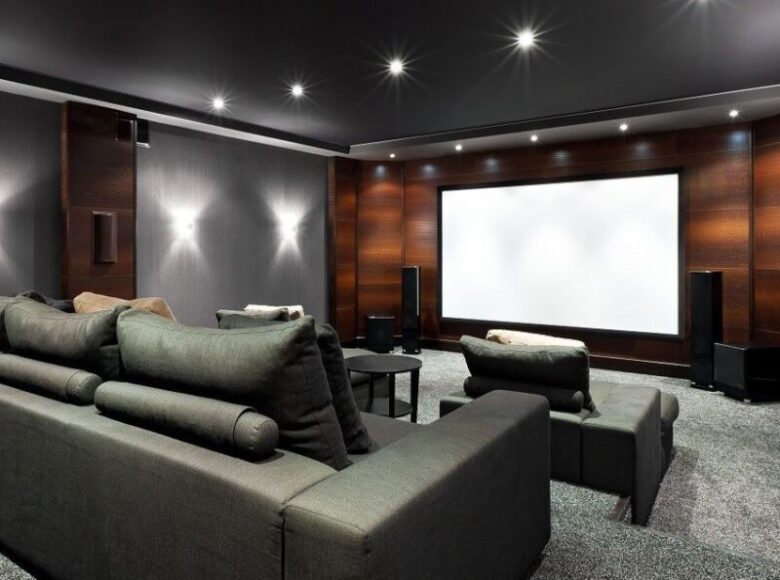
First, decide on whether you will have a TV :
Do
Choose a TV if its a multifunction room, with some ambient light.
Don’t
Waste money buying the newest model, prices drop so quickly on these items, last year’s model is a far more cost-effective option
or a Projector:

Do
Choose a projector if you want a screen bigger than 100 inches, GadgetLounge has some great pointers for which projector is best.
Choose a drop-down screen which can be rolled away if it’s a multifunction space.
Make sure you have enough ventilation for the projector if it is a larger model.
Consider ceiling mounting for ease of use and a clear line of sight.
Don’t
Choose a projector if ambient light is a problem, the picture quality will be compromised.
Then, make sure your screen position is perfect
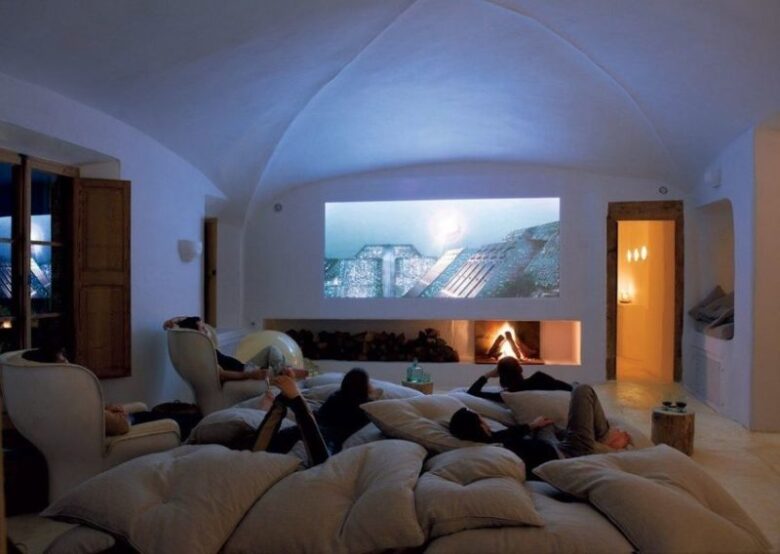
Do
Find the perfect seating position using a handy home theatre calculator
Don’t
Position the screen too high up. Viewers should be able to sit straight with the center of their gaze landing on the top quarter of the screen.
Sound
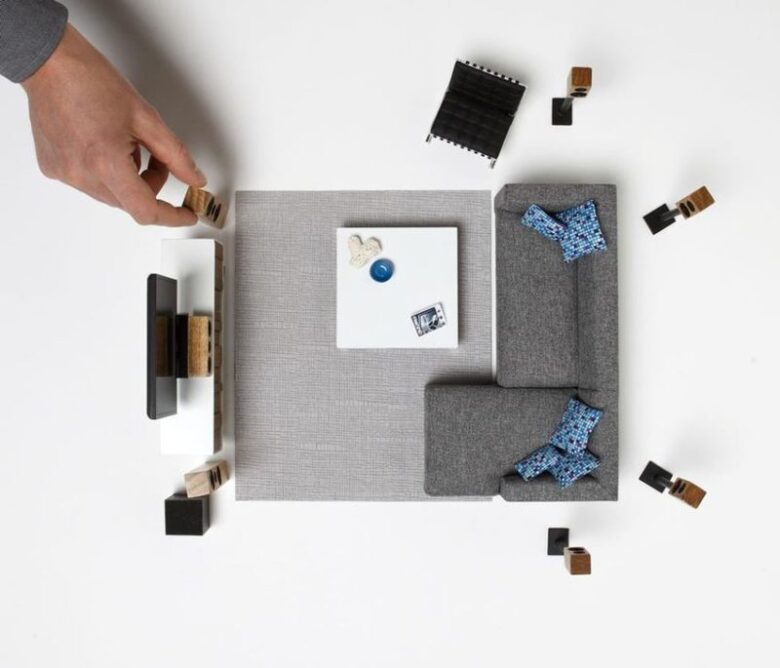
Choosing the right speaker configuration is the second most crucial aspect to consider after choosing your screen. If you’re going all out, speakers can be incorporated into the walls and behind the projector screen itself. If it is a shared space, speakers can even be hidden behind artworks.
Do
Choose a 5.1 surround sound configuration. That’s one on either side and one in the middle of the screen, 2 in the rear of the room, and the 1 is the subwoofer for deeper bass sounds.
Don’t
Spend more to get an average 7.1 option, rather invest in the best home theatre speaker system you can afford with a 5.1 ratio, for better value for money and sound. Check this great article from James Longman to find the best option for you.
The system itself
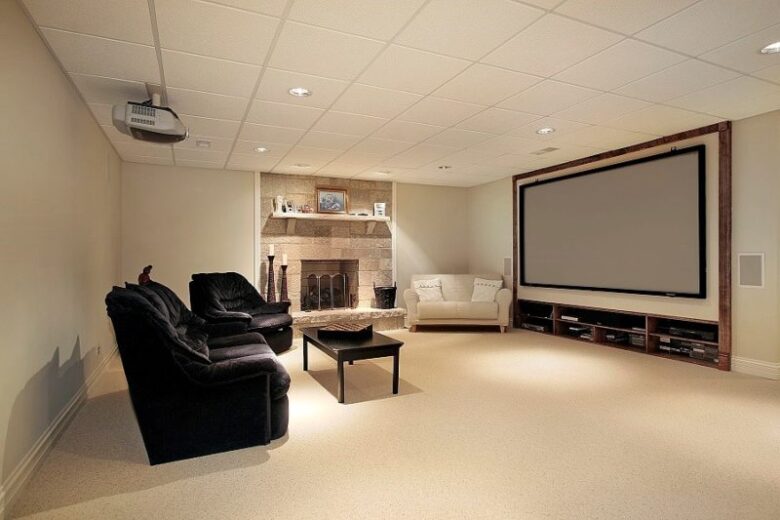
Build a dedicated a/v center. This is a space where all DVD, gaming consoles, and cable boxes will go, or if you’ve cut the cord at least one network streaming box. Make sure there is enough space to run all wiring and ensure it is well ventilated as these machines heat up. If it’s a shared space, design it so you can close it when not in use.
Do
Get a professional to link the whole system to one central controller to avoid having to get up to make adjustments during use.
Use the best cabling you can afford. A solid copper ethernet cable will ensure a steady signal with wide bandwidth, at least a Cat5e, especially if you’ll be using the system for gaming.
Don’t
Cut corners, to cut costs. A cheaper aluminum-based cable will negatively affect your viewing experience, and cost more to replace in the long run. The same goes for speakers, and all of the other additions required.
Forget a high-quality surge protector. Add up the value of all of your equipment and buy a protector that is up to the task of protecting your investment.
Lighting
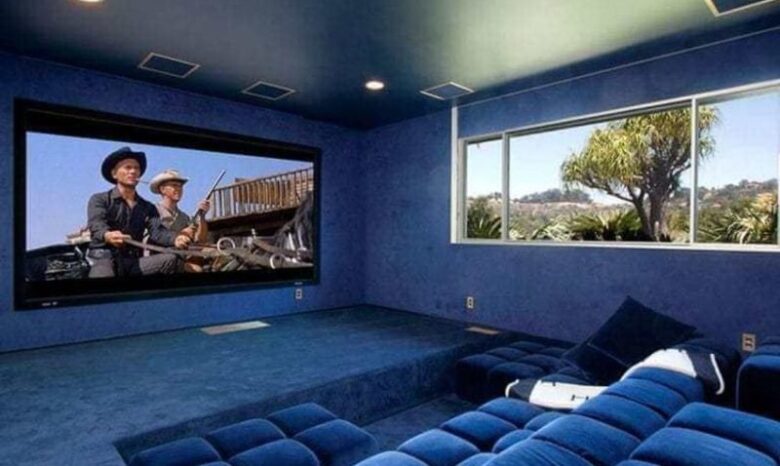
Ambient light can ruin a viewing experience, especially if you are using a projector, so ambient light needs to be carefully controlled.
Do
Block all ambient light sources, including placing heavy curtains or blinds over windows, and close off any open doorways.
Install lighting that can be dimmed/adjusted as needed, preferably from the main control point, to avoid tripping in darkness for a loo break.
Everything from adjustable wall sconces to recessed lighting in ceiling soffits can add ambiance for the dramatic cinematic experience.
Don’t
Spend too much money rewiring your room, unless you’re going all out, a simple dimmer switch could be enough and a cost-effective option.
Acoustics
Almost as important as lighting, ambient sound can ruin the magic of the cinematic moment.
Do
Soundproof the room as much as possible, this could be adding an extra layer of drywall, or insulation wallboards, or installing upholstered panels onto the walls.
Carpet walls, or cover them with fabric. Ceiling boards and a thick pile carpet on the floors are equally important, to block the washing machine spin cycle from ruining the final dramatic scene of your film.
Don’t
Forget to insulate your doors and windows from the sound. Again an upholstered panel fitted to the inside of a door works well, or change the whole door from hollow core to a solid option. Windows can simply be covered with a heavy drape, or more high tech, sound limiting automatic blind.
Decor
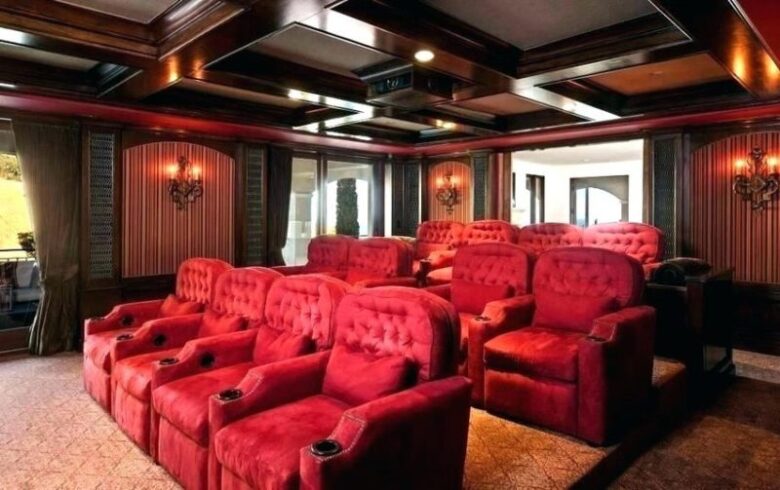
If this is a dedicated room, decide what you want the space to look like. Choose colors and fittings to suit your dream space. If it is a shared room, consider what else space will be used for. A set of 4 separate recliners may not comfortably fit in a dual-purpose space, but a modular sofa can be rearranged as needed.
Do
Make sure seating is comfortable for long periods and upholstered for added soundproofing.
Add tiers if you can afford it, to ensure everyone has a great viewing angle. Raising the back row by as little as 6 inches can do the trick. Build a platform with 2×6” boards set on their edges, lay half-inch ply on top for the floor layer and carpet for soundproofing.
Paint the room a dark, matt color, especially the ceiling and walls closest to the screen. This avoids light reflection, improving the picture quality.
Don’t
Choose seating with high backs if you are creating rows, to avoid blocking views.
It’s always a smart idea to get professional guidance, especially when buying the technical elements of your setup. Look up tech reviews before buying anything, and remember, this is supposed to be a fun space, so enjoy the process of creating it.


